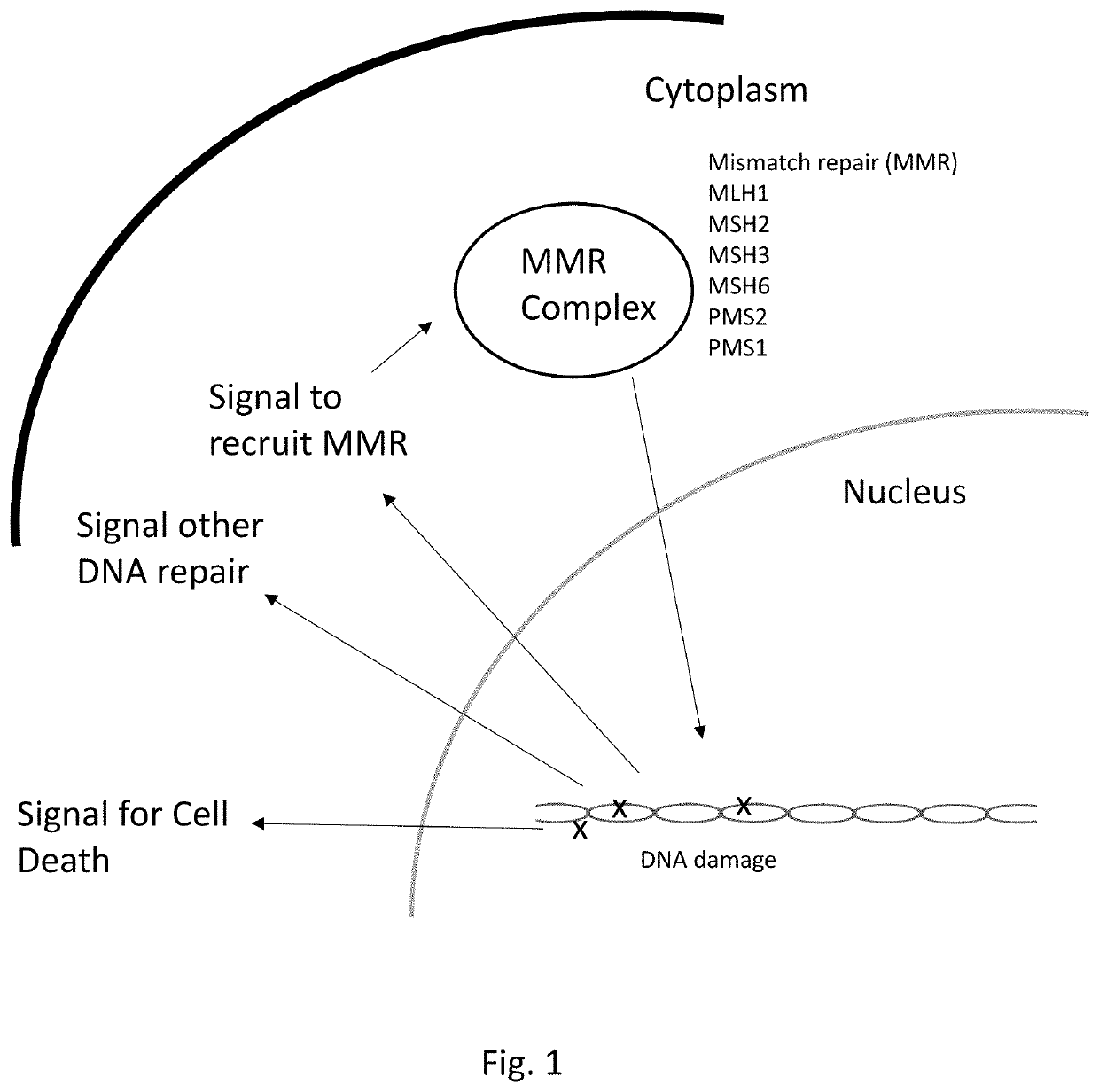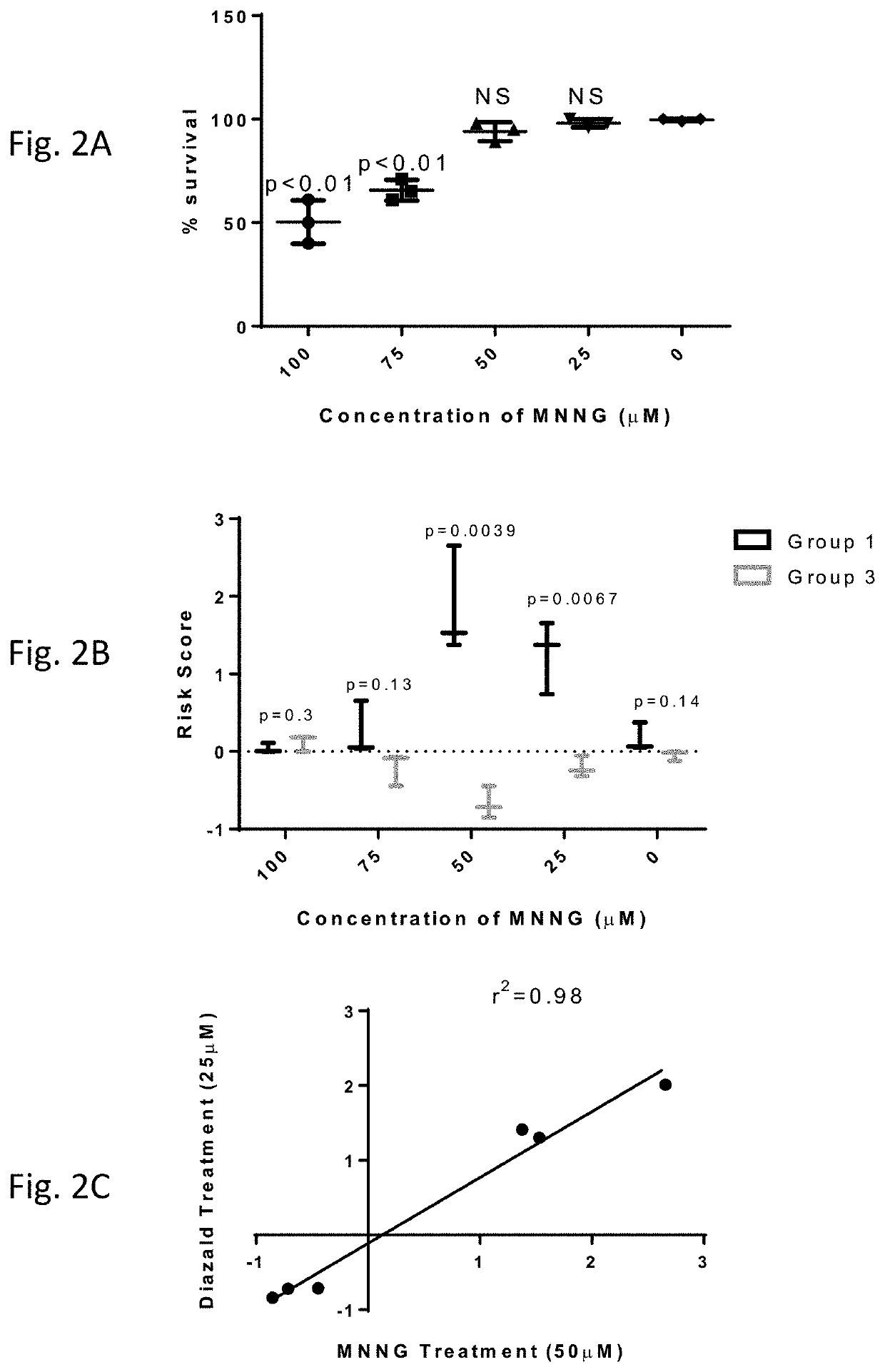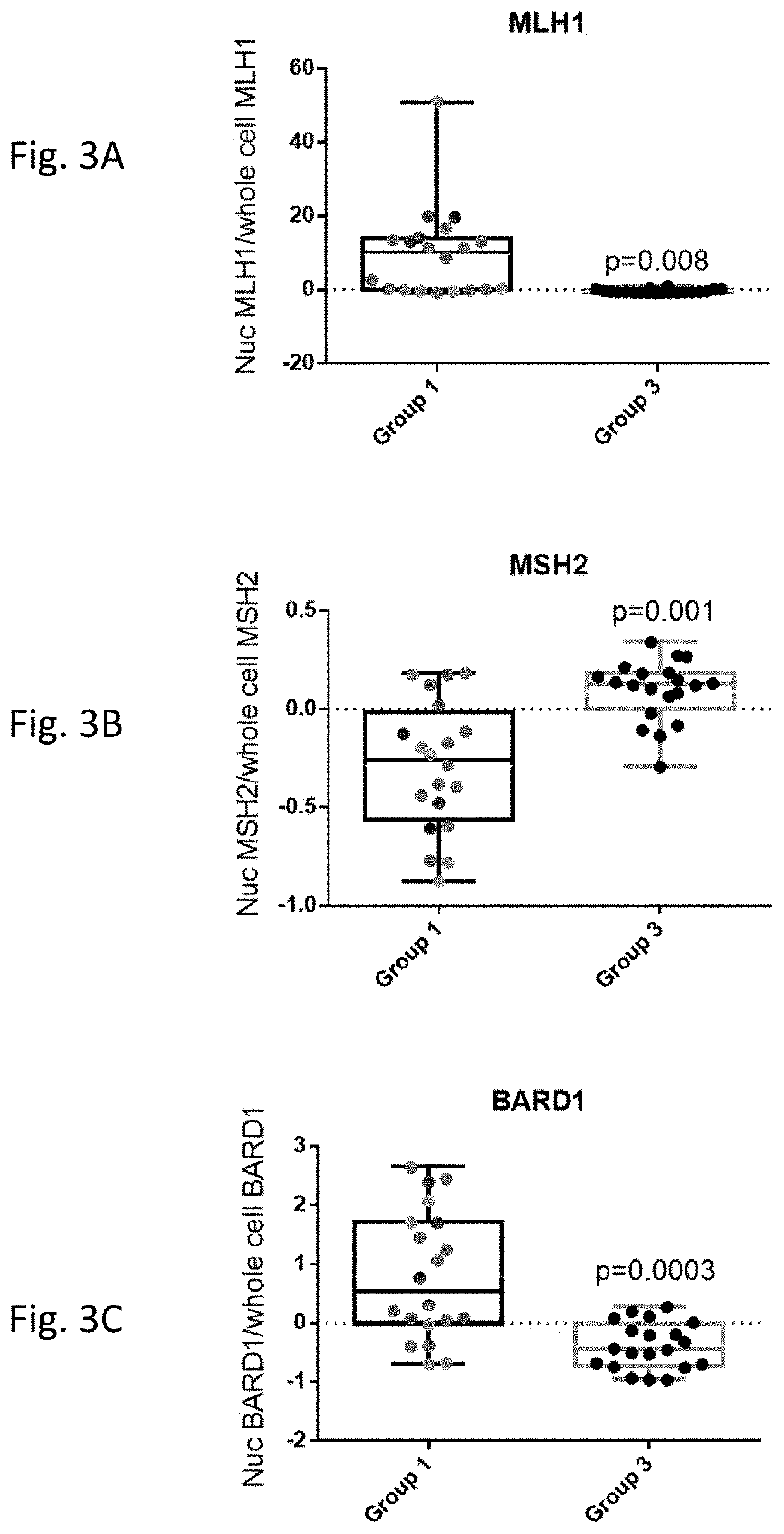Methods and compositions for diagnosing and treating, germline mismatch repair deficiencies, lynch syndrome and assessing germline risks of cancer
a technology of germline mismatch and composition, applied in the field of methods and compositions for diagnosing and treating, germline mismatch repair deficiencies, lynch syndrome and assessing germline risks of cancer, can solve the problems of limited scope and depth of most sequencing methods, cellular lethal or cancer in the homozygous state, and difficulty in accurately diagnosing patients annotated variants
- Summary
- Abstract
- Description
- Claims
- Application Information
AI Technical Summary
Benefits of technology
Problems solved by technology
Method used
Image
Examples
example 1
ocalization and Nuclear Second Messenger Assay for MMR Deficiencies
[0094]This example describes exemplary protocols and reagents for the FVA assays to diagnose LS.
[0095]Staining Protocol
[0096]1. Use 2-8 ml of freshly drawn blood in an ACD or Na citrate tube (not older than 3 days after collection, ideally within 24 hours), pour into a sterile 50 ml conical tube with 3× volume with red blood cell (RBC) removal buffer (selectively lyses RBC with minimal effect on leukocytes) incubate on a rotator for 5 minutes (no more).
[0097]2. Spin at 1080 g for 5 minutes to pellet cells. Gently remove supernatant while maintaining intact pellet. Rinse with 20 ml of 1× PBS and repeat step two more times. Pellet should be a yellowish-white color.
[0098]3. Carefully remove supernatant and add 1 ml of pre-warmed culture media (37° C.). Resuspend pellet. Put suspended cells in media into barcoded 2 ml Matrix tubes (screw cap or silicone push caps) and add 50 μM MNNG. Keep lid on tube loose to allow air c...
PUM
| Property | Measurement | Unit |
|---|---|---|
| volume | aaaaa | aaaaa |
| volume | aaaaa | aaaaa |
| time | aaaaa | aaaaa |
Abstract
Description
Claims
Application Information
 Login to View More
Login to View More - R&D
- Intellectual Property
- Life Sciences
- Materials
- Tech Scout
- Unparalleled Data Quality
- Higher Quality Content
- 60% Fewer Hallucinations
Browse by: Latest US Patents, China's latest patents, Technical Efficacy Thesaurus, Application Domain, Technology Topic, Popular Technical Reports.
© 2025 PatSnap. All rights reserved.Legal|Privacy policy|Modern Slavery Act Transparency Statement|Sitemap|About US| Contact US: help@patsnap.com



